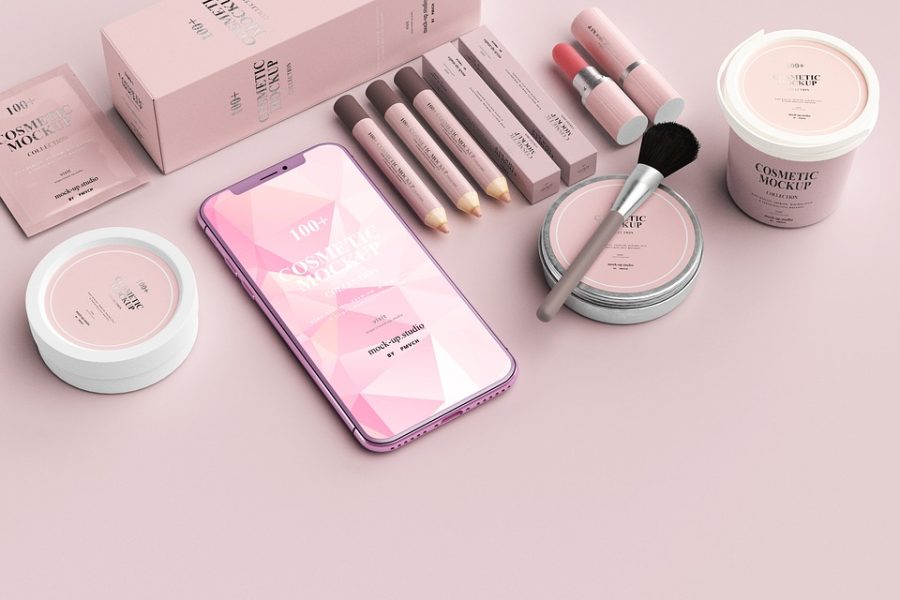Just How Unattainable Have Beauty Standards Become?
https://www.maxpixel.net/photo-4993470
Cosmetics Makeup Cosmetic Products Beauty Face
For centuries societies across the world have established beauty standards, in essence defining what the “ideal” person would look like. The concept of overarching societal beauty seems simple in theory but has become increasingly complex.
“I think companies have a way of planning, especially with clothes, what body type should be in this type of clothes. A lot of them have specific criteria you have to meet if you want to model that brand,” Orono High School senior Delaney Whitney said.
In western society, having an hourglass body shape, with the addition of a perky chest and derriere has become very desired by females. Additionally, it is highly sought after to have plump lips, big-angular eyes, a small button-like nose and tanned skin.
This new popular beauty standard is problematic in various ways as they are essentially impossible to achieve naturally. Upon deeper investigation, each of these desired traits originates from various ethnic enclaves- but are situated on one face. Additionally, basic science negates the physiological possibility that this “body type” is realistic and even possible. Because of this, plastic surgery is utilized to achieve this desired look.
“During the pandemic, 11% of women surveyed indicated they are more interested in cosmetic plastic surgery or non-surgical procedures now than before COVID-19, and the figure is even higher among women who have already had surgery or a procedure – 24%, respectively,” the American Society of Plastic Surgeons said.
With the presence of social media, these unrealistic body and face features are broadcast everywhere for teenagers to see. In fact, the overwhelming presence of this beauty standard on the internet has led young people to believe that they are not attractive or beautiful enough. This in turn has led to significant mental health issues.
According to a survey conducted by the Channing Laboratory, Department of Medicine at Brigham and Women’s Hospital,
69% of elementary aged-girls say that the pictures influence their concept of the ideal body shape. Of those, 47% say the pictures make them want to lose weight.
In order to understand the science behind this common mindset, Psychologists Mavis Henriques and Debasis Patnaik conducted a research study analyzing the minute reasoning between compulsive behavior, related to appearance. They found that “Many women may imitate their ideal media personality due to the social, psychological and practical rewards associated with this ideal and the belief that their life would change for the better.”
For some, taking “control” of one’s appearance is a way to establish control over your own life. However, in most cases, this form of “self-control” is problematic as it leads to disordered eating, destructive thoughts and in some cases Body Dysmorphic Disorder.
“Body Dysmorphic Disorder is a disorder where men and women become convinced that either one thing in their body is wrong or disfigured, or their whole body is to the point where it starts to impair your functioning,” licensed Clinical Social Worker Gretchen Placzek said.
According to Johns Hopkins Medicine, one can become obsessed with any part of the body, but “the most common areas are your face, hair, skin, chest, and stomach.”
Sadly, it has become normal for one to struggle with self-image issues, and suffer from various mental health issues as a result of that. As modern-day societal standards continue to grow more impossible, the rate of mental illnesses, and more specifically eating disorders, continue to increase at a staggering rate.
According to the National Association of Anorexia Nervosa and Associated Disorders, roughly 24 million people in the United States suffer from one of the various types of Eating Disorders.
Nancy Holmes is a former board-certified Clinical Nutritionist. During Holme’s practice, she specialized in managing disordered eating patients’ health as they partake in treatment.
“ Females body composition needs between 20-25% body fat percentage. However, to have visible abdominal muscles showing you must keep your overall fat percentage around 17%. A healthy and sustainable diet would include the four basic food groups- meat, poultry, eggs, milk and cheese, the dairy group, fruits and vegetables and the cereal and bread group,” Holmes said.
As outlined by Nancy Holmes, it is unhealthy to have a lower body fat percentage as a female. With this being known, how is it possible to have a low enough body fat percentage for abs, while simultaneously having a large enough fat percentage to have a visible chest, while also having a large enough muscle index for a large gluteus maximus?
It should not come as a surprise to many that society has become exceedingly superficial. Money, wealth and beauty have in a sense become a modern-day “currency”. This reality has only worsened with the rise of the internet.
“In today’s day and age beauty is kinda like a currency. Pretty privilege, which is the concept that having more beauty equates to better treatment, is prevalent and known across the world by most people, “ OHS senior Alex Hansen said.

Hi, my name is Libby Engebretson! This is my third year on the Spartans Speaks, and I am currently an Editor in Chief. In my free time, I enjoy reading,...











